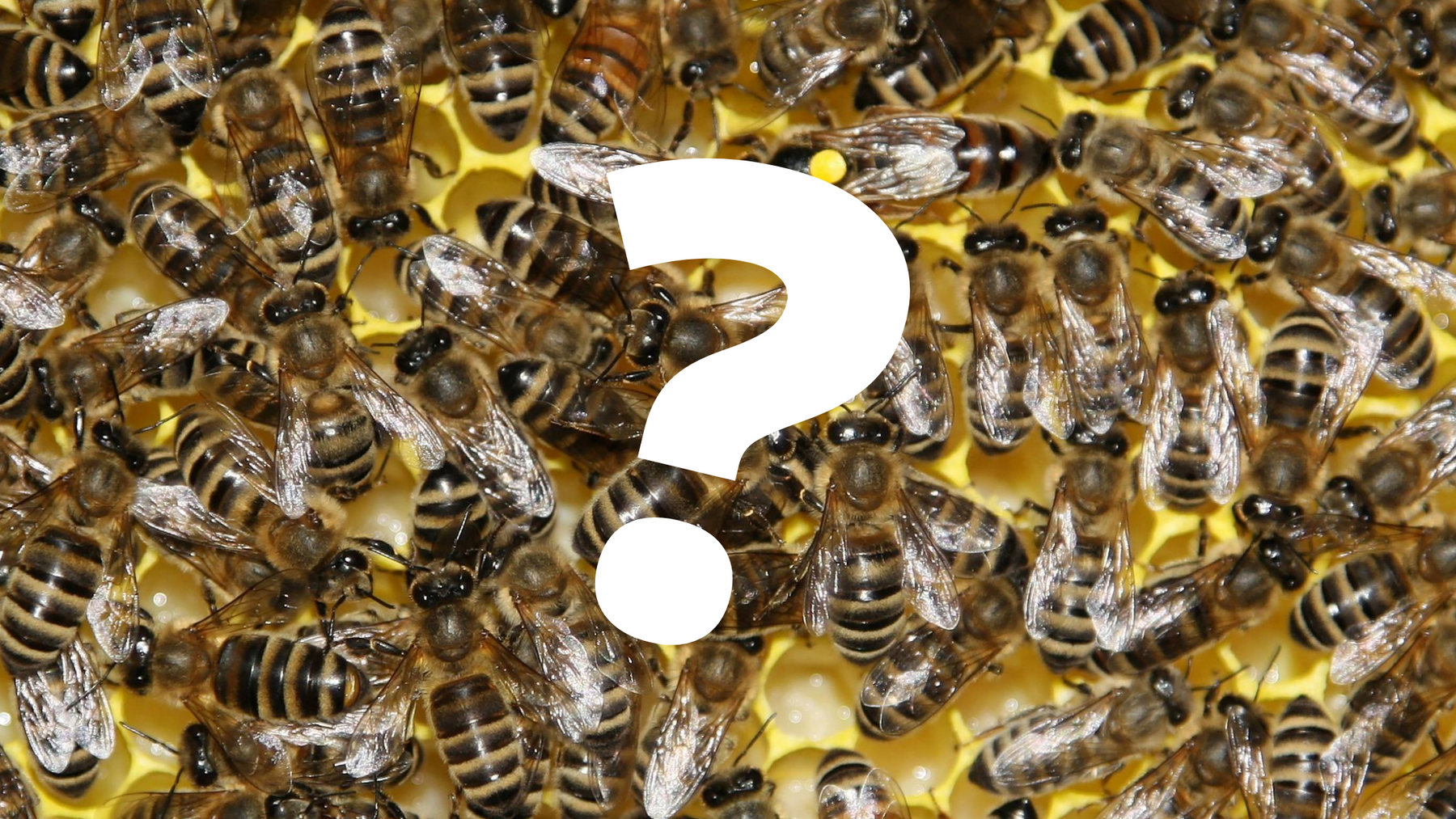
6 Ways to Tell If Your Beehive is Queenless
You’ve followed all the beekeeping rules, and you’re looking forward to your next hive inspection. But when you open your hive, things don’t quite seem right. The bees appear agitated and maybe even aggressive, and there doesn’t seem to be as many as you remember. Upon further inspection, you can’t find any brood. Could your hive be queenless?
What are the signs that your hive may be queenless?
1. A Drop in Population
The average hive has between 50 to 60 thousand bees. Obviously, you can’t count them, but after spending some time with your hive, you begin to get a feel for what is normal. Bees die every day, but eggs are continually laid to replace those that die. When numbers drop significantly, the queen may not be present and doing her job of laying eggs to replace honeybees that die.
2. Missing Brood and Eggs
During nectar flows, a queen will lay eggs every single day. If eggs are present, you know a queen laid them in the last three days. If bee larvae are present in uncapped cells, the queen laid the eggs within the last nine days. If the larvae are in a cocoon and cells are capped, the queen laid eggs within the last 20 days. If none of the above can be found in your hive, the hive has been queenless for more than 3 weeks.
3. Pollen and Honey Stores Where Brood Should Be
The first job a worker bee has is that of a nurse bee. Without any eggs or larvae to tend, they quickly move to guard duty and then food hunter. This means more bees are out gathering pollen and nectar because they aren’t needed for nurse duty. The pollen and nectar these surplus bees gather must be stored somewhere, so the bees begin using the available comb that would have been used for brood.
4. Presence of Queen Cells
When a queen is failing or absent, the colony will attempt to create a replacement queen. To accomplish this, they make queen cells. Note, however, just because you see a queen cell in your hive doesn’t necessarily mean your hive doesn’t have a queen. But, if a queen cell is present and brood is absent, there’s a good chance your hive is queenless. When you see a queen cell, try to determine what stage it’s in. Does it have an egg or larva in it? Is it or has it previously been capped? This will help you determine if your hive is raising a new queen or hopelessly queenless.
5. More Than One Egg in a Cell
The queen is very proficient at laying eggs and is adept at egg placement. In a queenless hive, workers may begin laying eggs in an attempt to replace her. Workers don’t do the job nearly as well as the queen and will lay eggs randomly, often, more than one in a cell. If you see more than one egg in a cell or see an egg on pollen bread, you know your hive is queenless.
When workers begin to lay eggs, you’re in real trouble. They become very hostile towards you and any queen you may introduce. A previously timid colony may even pour out of the hive to defend it when you open the hive to inspect it. At this point, most beekeepers get rid of the colony, shaking out the bees and begin with a new NUC. Aggression, along with lack of brood, often means the hive is queenless.
6. A Large Number of Drones
A hive with a large number of drones is likely queenless or has a queen laying infertile eggs. Workers who are laying are also laying infertile eggs, causing drone populations to skyrocket.
Genera Questions
How can a beekeeper distinguish between a queenless hive and one experiencing a temporary absence of brood?
To differentiate between a queenless hive and one with a temporary absence of brood, look for new eggs or very young larvae, indicating recent queen activity. Consider the season, as brood reduction is normal in late fall or winter.
What precautions should a beekeeper take when introducing a new queen to a queenless hive?
When introducing a new queen, use a cage with a candy plug to gradually release her, allowing the colony to acclimate to her pheromones. Monitor the hive for acceptance or aggression and protect the queen if needed. Ensure the hive is calm and free from external stressors for a smooth introduction.
How do multiple eggs in a cell affect hive health, and how should a beekeeper address this issue?
Multiple eggs in a cell suggest laying workers in a queenless hive, leading to an unbalanced, drone-heavy population. To address this, introduce a new queen after reducing laying workers, or merge the hive with a queenright colony to restore proper hierarchy and brood patterns.
What preventive measures can beekeepers take to avoid hive queenlessness?
Prevent hive queenlessness by regularly inspecting queen health and brood patterns, ensuring ample space and resources, managing pests, and handling the hive gently during inspections.
What are alternative solutions for a queenless hive aside from starting anew?
Instead of starting anew, beekeepers can introduce a new queen, merge the hive with a queenright colony, or allow the hive to raise a new queen from existing larvae. These methods help maintain genetic diversity and hive strength, requiring patience and careful monitoring.
-
If you’ve discovered that your hive is queenless, one solution is to raise a queen yourself. We offer a Queen Rearing Kit with detailed instructions to make this task fun and easy.




Comments
Leave a comment